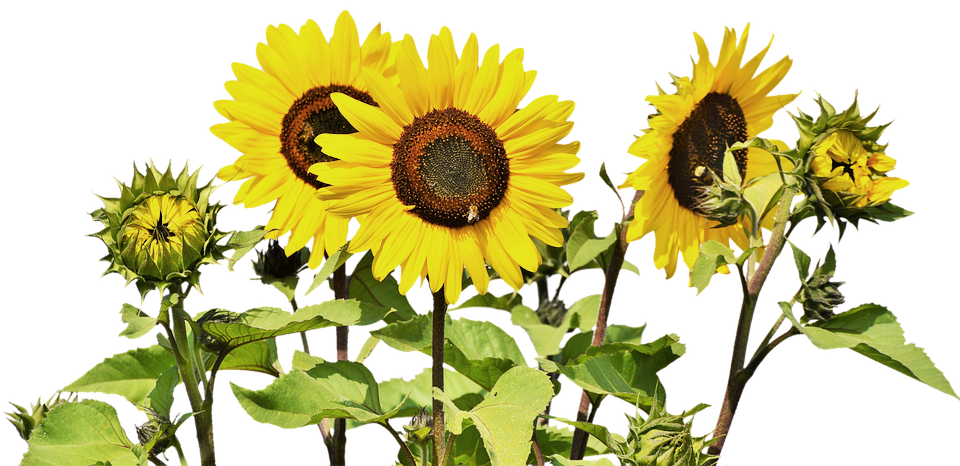
Container Garden University: Moisture
By Chris Edmunds
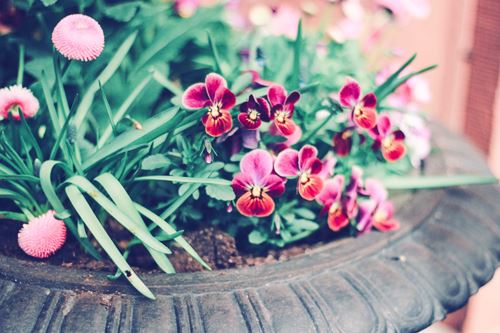
“To be able to walk out the door when you come home from a job and wander into the garden to do a bit of watering gives you time to be creative in your mind.”
-Mary Berry
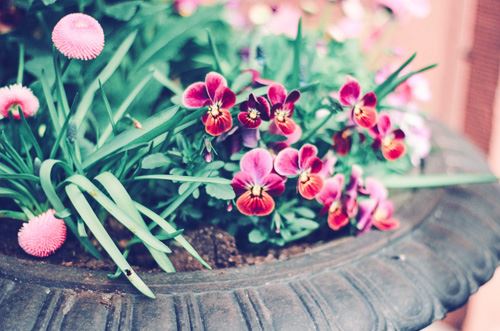 Water is just a plain drink for many of us, so it’s easy to forget how essential it is for life. Watering your plants is both simple and complicated. Here’s a guide from the specialists at our greenhouse in Blue Springs to keep your plants hydrated and healthy.
Water is just a plain drink for many of us, so it’s easy to forget how essential it is for life. Watering your plants is both simple and complicated. Here’s a guide from the specialists at our greenhouse in Blue Springs to keep your plants hydrated and healthy.
Matching Moisture Needs:
A container is a closed system. You aren’t able to water some roots without watering the others. This means that you’ll want to match plants with similar watering needs in the same containers. Part of planning a successful container involves ensuring that all your plants will play nicely with each other, while looking fantastic together, so making sure they have similar needs is very important.
In order to match your watering routine to the needs of your plants, you need to know what factors cause plants to need more or less water. It’s a rule for almost all plants to let the soil dry out on top before you water again.
When you get familiar with the factors that affect soil moisture, you will learn how to predict when your pots need to be watered:
- Temperature. The warmer it is the more they drink. Conversely, the cooler it is the longer it takes for the soil to dry out.
- Wind/air circulation. Wind obviously dries plants out faster than about anything besides temperature, but also if your container is on a patio, say, and the air around it is more trapped than one out in the open, it won’t dry out as fast.
- Sun and shade conditions. Containers in sun will dry out many times faster than containers in shade.
- Container size. Smaller containers hold less moisture and need water much more often than larger containers. A container less than 12-inches may dry out so fast in sun/wind that it can’t make it through a warm day on one watering. (Soil crystals can help.)
- Plant maturity and size. As your plants mature they will drink more. While it’s best not to let newly transplanted plants dry out too much on top as their roots haven’t expanded into the soil yet, your younger plants will not drink as fast as when they get more mature. Likewise, a plant with a larger, more vigorous habit will drink faster than a plant with a smaller habit.
- Number of plants in a container. If you decide to make your planter full-looking right off the bat and pack it with plants, it will need more water than if you only plant a few. The more roots, the faster the soil dries out.
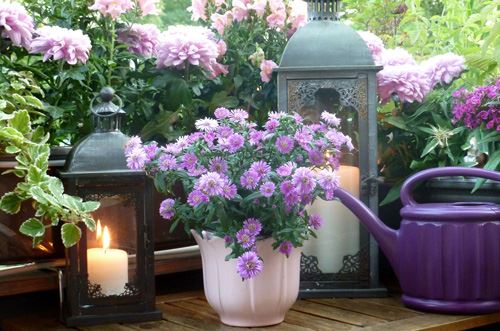
Water the soil, not the plant
According to the team at our plant nursery in Blue Springs, most plants like to be watered thoroughly and then allowed to dry out on top before the next time they are watered. If you water and only get the soil surface and/or get the foliage wet, and are not thoroughly saturating your pot to the point water flows out of the bottom, you are going to be watering more often and probably not getting the best performance from your plants.
Be cautious if you have soil that pulls in from the sides of your pot. This can cause water to travel down the sides of the pot and out the bottom without soaking the soil enough. If this happens, fill your pot with water, let it drain out, and wait 5-10 minutes for the water to break the surface tension, then water your container again as normal. The second watering will then penetrate the soil.
Watering the foliage and flowers should be avoided if possible because it can cause foliage disease. Put the water directly on the soil surface.
Watering Your Containers
Containers need to be watered more frequently than your in-ground plants. Many of the reasons they end up getting so thirsty are the same reasons your containers are so much more eye-catching than your beds.
-
The sides of the pot absorb heat from the sun, which heats the soil and roots inside. Warmer roots are much more active and grow more.
-
Your soil is probably (and hopefully) more porous than soils found in most flower beds. Porous soils trap air better and allow roots to grow much better, but will dry out faster than heavy soils.
-
Container plants are usually high performance varieties, which are, therefore, more needy of moisture and nutrients. (High performance varieties are sold in round pint or quart pots, not 4-paks. With a few exceptions, they are much more vigorous growers than plants sold in 4-packs.)
Still, there are ways to dodge the chore of having to water your container too frequently. A bigger container will dry out less frequently. Also, if you put a thin layer of wood mulch on the surface of your container, it will help prevent water from evaporating. This makes for healthier and more polished looking containers, with less work. Soil crystals can help stretch the time between waterings.
A great way to determine how wet a container is, is to lift or tilt it to determine its weight--heavier is wetter, lighter is drier. Another easy way is to poke your trusty finger a couple of inches into the soil and feel for moisture. Also, if you don’t mulch the top of your container you may be able to tell by soil color. Most drier soils are lighter in color than when they are wet.
Using high-performance annuals will give you brighter color and a more spectacular show that lasts longer. The trade-off is that these high-performance plants need more water and fertilizer, but they’re definitely worth it.
Different Water Needs:
Plants are fairly easy to categorize based on how much water they demand, and many of them have similar care instructions depending on which category they fall into. Our garden center in Overland Park, Kansas, recommends using discretion when watering plants of different species in the same container. Use the following as a helpful guide to pick the plants you want and help them perform well once you’ve got them home.
Succulents & Cacti:
Succulents and cacti are incredibly drought tolerant. Once established, succulents can go weeks between waterings. Once a week is probably too much, unless the weather is hot and they are in a sunny location, and in smaller pots. You might say that in our region of the country, succulents are the only plants that are truly drought tolerant, except well established drought tolerant perennials.
“Drought Tolerant” Plants:
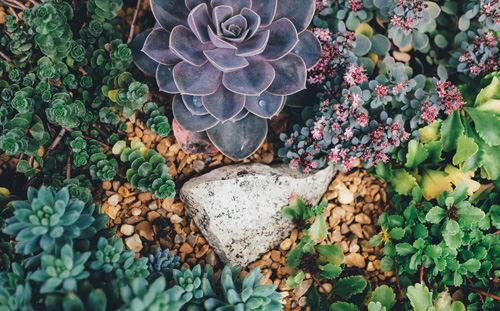 Plants classified as drought tolerant, will probably last longer between watering than non-drought tolerant plants, but could still need to be watered once a day on hot and/or windy days.
Plants classified as drought tolerant, will probably last longer between watering than non-drought tolerant plants, but could still need to be watered once a day on hot and/or windy days.
You can find drought tolerant plants here by clicking on “drought tolerant” under “Characteristics.” http://www.kawvalleygreenhouses.com/super-duper
While it’s always a good practice to water plants until water flows out the bottom of the pot, these plants don’t like to have permanently wet feet.
“Happy Medium” Plants:
These Goldilocks plants like their moisture to be just right! A well-draining medium and an empty saucer (or nothing at all) will be the best choices here. A fool-proof way to test if these plants are ready to water is by poking a finger into the soil. When the soil is dry up to your first knuckle, it’s time to give your plants a drink.
Water Lovers:
Tropical plants love to be kept consistently moist and will be your thirstiest plants. (BTW, all tropicals should be repotted after you purchase them.) When you can see that the surface of the soil is drying out, you’ll know that it’s time to water again. If you want to make your watering schedule easier, and help your plants look their best, these are the types of plants that will benefit most from a layer of mulch.
You can find all of these types of plants at any plant nursery in Overland Park, or wherever your nearest Kaw Valley Greenhouses location might be.
Breathing Roots
Just because a plant likes lots of water doesn’t mean it will do well in muddy dirt that doesn’t drain well, or in a pot with no holes for drainage. A plant that likes lots of water still won’t tolerate drowning. Instead, all your plants can be potted in the same well-draining soil, the only difference will be how much you water. This keeps the roots fresh, and your plants happy and vibrant all summer.
That’s why we use and recommend a high-quality potting soil like KVG Good Stuff Brand that holds air, moisture, and nutrients in the root zone. Beware--most national brands have poor quality ingredients that don’t hold enough moisture, air, and nutrients.
Watering might not be as simple as following the same schedule for anything that’s green and grows, but it doesn’t have to be complicated either. What it comes down to is thinking about what kinds of plants you have, the factors that affect soil moisture and matching your watering routine to them.
A little bit of effort to give your plants the water they need is all that is required to have super-healthy and spectacularly beautiful displays all summer long!

